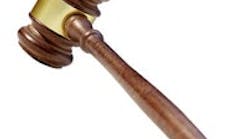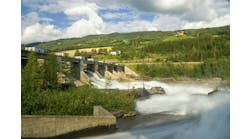Greg McMillan and Stan Weiner bring their wits and more than 66 years of process control experience to bear on your questions, comments, and problems. Write to them at [email protected].
Greg: We conclude our series of interviews with Hunter Vegas, senior project leader for systems integrator Avid Solutions, Winston Salem, N.C., with a wrap up of measurements and actuators, valuable advice for projects, and an amusing, insightful list of "Things You Don't Want to Hear on Start-up."
Stan: Why do you favor radar over ultrasonic level measurements?
Hunter: Ultrasonic transmitters are affected by vapors, foam, temperature and pressure in the space between the sensor and level. There is also a blanking distance where the reading goes to zero when the level is within this distance. I had a sludge tank that was automatically refilled based on the level reading of an ultrasonic device. One time, the valve was a bit slow to close, and the sludge level rose to within the blanking distance. Suddenly, the transmitter read a zero level and opened the valve to refill the tank. Operations was not amused.
Radar works well if the dielectric constant of the fluid is sufficient, and if the application is properly engineered for the internals of the tank. If there is foam, the meter may be measuring the surface of the foam rather than true liquid level, but this may be desirable for preventing entrainment in overhead systems. Radar is the one case where I lean heavily on the vendor's expertise to help me choose the proper meter, frequency and antenna. I provide the expert with complete drawings of the tank, including details of the internals, agitators, baffles, dip tubes, etc., and let him choose the best solution. The cost of radar has dropped dramatically in recent years, making it competitive for many applications.
Greg: How about capacitance and admittance level transmitters?
Hunter: While capacitance and admittance switches can work very well, the continuous level devices are more problematic. These types of meters usually require a field calibration where the process level is varied and independently measured, which can be impractical during start-up. Furthermore, any variation in the dielectric constant in the process can cause the reading to drift. There have been some attempts to use a third probe to compensate for this effect, but bubbles and layering can still cause problems.
Stan: What is your take on filled systems for DP level measurements?
Hunter: Diaphragm seals can be very tricky to specify and use. The larger the diaphragm area, the better the measurement sensitivity will be, but the susceptibility to temperature-induced error that throws off the zero will also be greater. Single cell "pad type" level transmitters are very susceptible to this problem and will tend to have zero-drift problems, if the process temperatures vary much at all.
Capillary tubing also has issues. If the tubing diameter is large, the meter response time will be improved; however, the larger volume of fill fluid will shift the DP reading if the ambient temperature changes. This effect is particularly bad when a meter has a capillary seal on only one side and the tubing is in the sun. The fluid expands and creates a static pressure, shifting the meter zero. Dual capillary seals are a bit better since the effect of temperature expansion is the same on both sides, and so they tend to cancel each other out.
Selecting the proper fill fluid is important too—especially if a vacuum can be encountered. Each fill fluid can handle varying amounts of vacuum and temperature. However, the ones rated for higher vacuums often have very high viscosities that slow meter response and may be unsuitable for low ambient temperatures. The presence of silicon in the fluid can also be a source of problems due to process incompatibility.
There are a lot of tradeoffs to be considered when specifying a filled system. Take the time to understand the options and choose wisely.
Greg: What about the age-old question of using a thermocouple versus a resistance temperature detector (RTD)?
Hunter: It seems everyone has an opinion on this. I usually use thermocouples for high temperatures and temperature indications with low accuracy requirements, as it is more expensive to run thermocouple extension wire. RTDs have better sensitivity, less drift, lead wire compensation, and they are easier to calibrate. Most people use field-mounted temperature transmitters now, so the wiring is easier in either case. If you use a integral-mounted temperature transmitter, be sure to get a long enough extension to protect the transmitter from getting "cooked" by the process temperatures.
Stan: What about on-off actuators?
Hunter: There are several different actuator designs, and no doubt the vendors will argue the merits of each. However in my experience, there are two major issues that largely determine if an actuator will hold up in service—cylinder O-rings and actuator sizing.
Most pneumatic on/off actuators employ a cylinder moving inside the actuator casing. The better actuators use a large, flat O-ring or two round rings to seal against the air pressure and force the actuator to move. Cheaper actuators use a single O-ring that lasts a very short time before it starts leaking, and the actuator loses torque due to air leakage.
Sizing of the actuator is critical for long-term performance. I typically specify that all actuators be sized for one-and-a-half to two times the maximum torque required of the valve. You can save a little money by going with smaller actuators (and many suppliers will do this to make their bid more competitive), but about a year later when things start gumming up, you will have problematic valves and the folks in the maintenance department will hate you. I also tend to favor higher wattage solenoids for the same reason. If you have to use low-power or intrinsically safe solenoids, you need to make sure you have exceptional air quality.
Greg: Do you have any parting words on instrument upgrade projects?
Hunter: I have three pieces of advice for anyone beginning such a project.
- You can cut corners in a lot of places on a project, but buying cheap instrumentation is not the place to do it. You get what you pay for. The equipment may work fine through start-up, but over the course of the next few years, the company will lose those savings many times over in maintenance costs and lost production.
- Take the time to understand your process and understand the instrument options at your disposal. Do not toss the specs to your supplier and let him fill in the blanks. His priorities may be dramatically different from your own, and he almost certainly will not understand the specific requirements of your particular situation.
- Proper instrumentation design does not end with the specifications. A perfectly specified instrument will perform miserably if it is not installed correctly.
Top 10 Things You Don't Want to Hear on Start-Up
10. "We just need the owner to be a little more patient." (Supplier expert, actual quote)
9. Don't bother with a checkout—just light it up! What is the worst that can happen?
8. We didn't do any simulation or testing. We decided that would spoil the adventure.
7. I don't understand. It fit fine on the drawing.
6. "Cool, this is my first time in a real plant!" (supplier expert)
5. I tried to open the valve and nothing happened. Wait! The same valve on the other reactor just opened!!
4. Should the VFD drive smoke like that?
3. I don't understand. I am sure I left all your tools and radios in a box right here.
2. The CEO is on the phone holding for you.
1. Boom!! What was that?!?!
Ten more things you don't want to hear on an instrumentation project start-up
20. We standardized on the gain and reset setting of 1 used during checkout with tieback filters. (Actual case)
19. We set the controller gains equal to the proportional bands in the old controllers. (Actual case)
18. You mean you didn't label the wires before you lifted them?!?!?!
17. The civil, structural and mechanical schedules have all slipped a week each, but the start-up deadline has not changed; you have 4 ½ hours to do your install/checkout.
16. We let IT rebuild all your control computers to meet their standards. That's ok, right?
15. Yes it is serial number 1, but it worked great in the lab!
14. We've never seen this problem before.
13. The thermocouple wiring is completely finished. Red is positive, right?
12. This is "Sleepy" Murdock. He's been assigned to work with you as your I/E tech for check out.
11. The integration company has lost too much money on this start-up so they flew home last night. (Actual quote)

Leaders relevant to this article:





